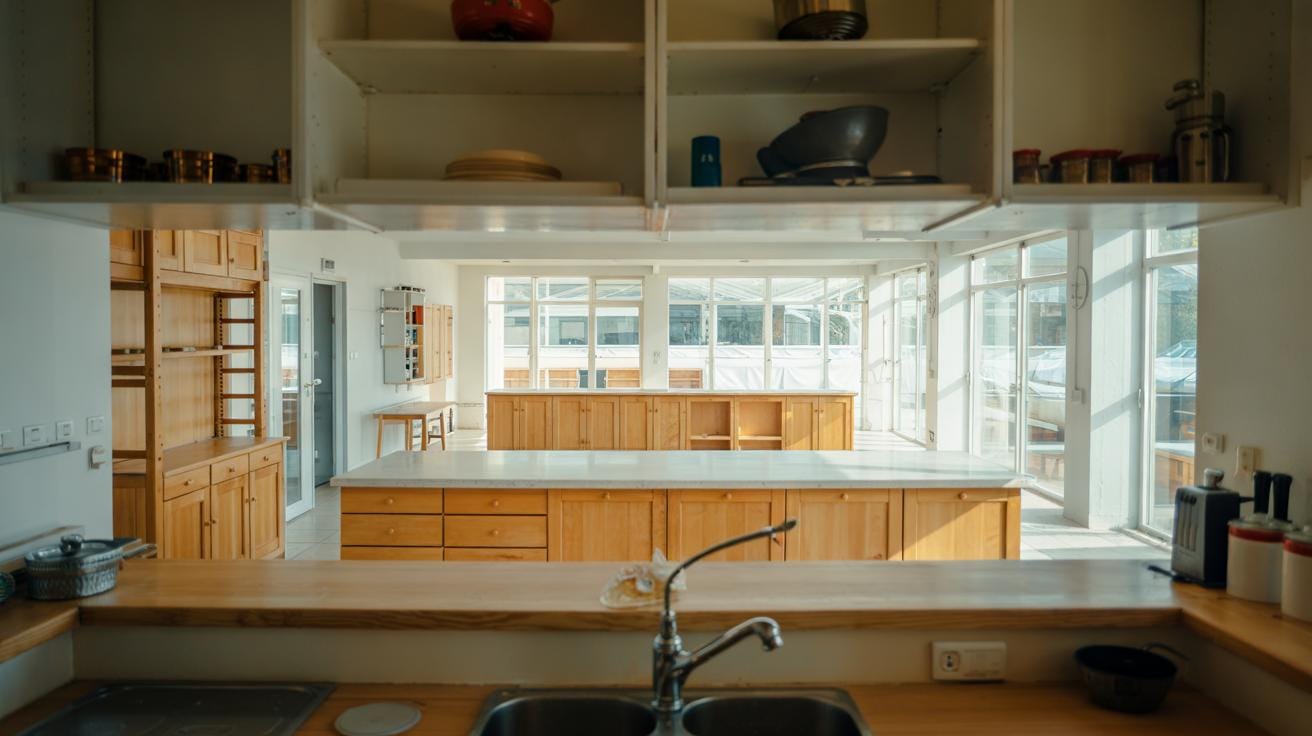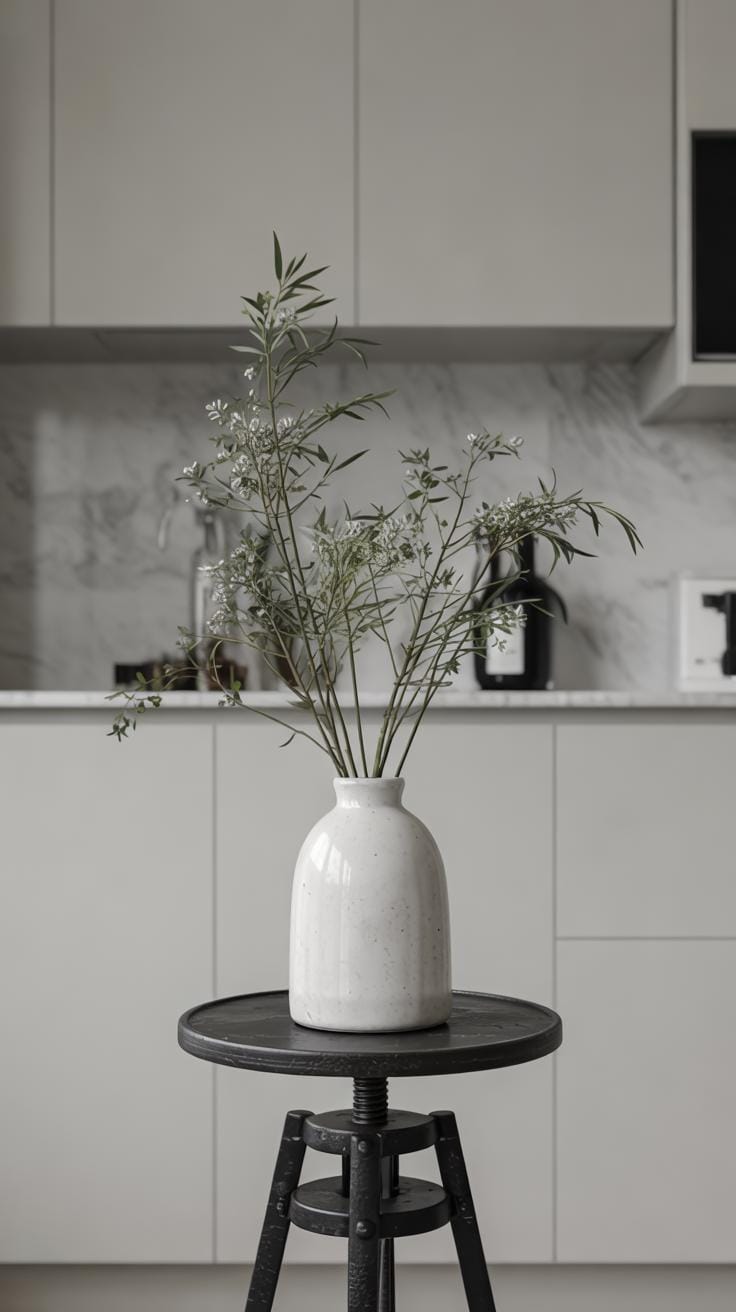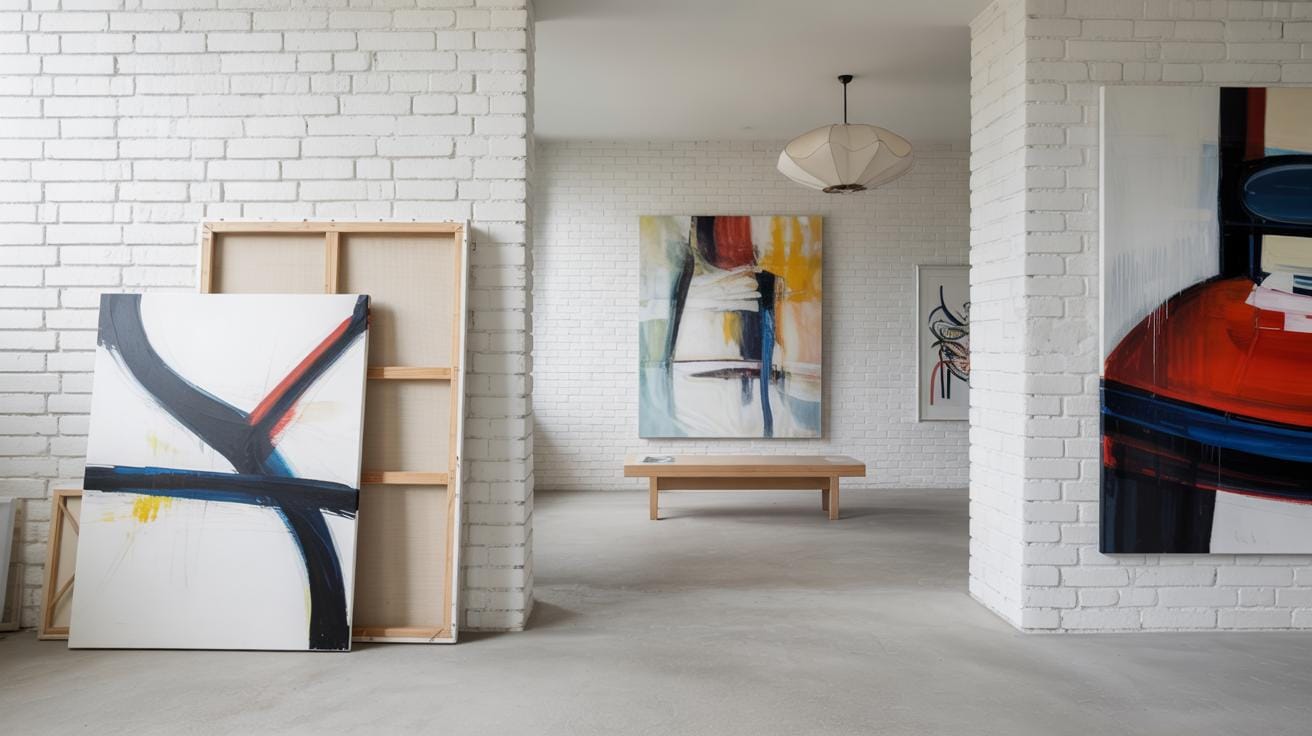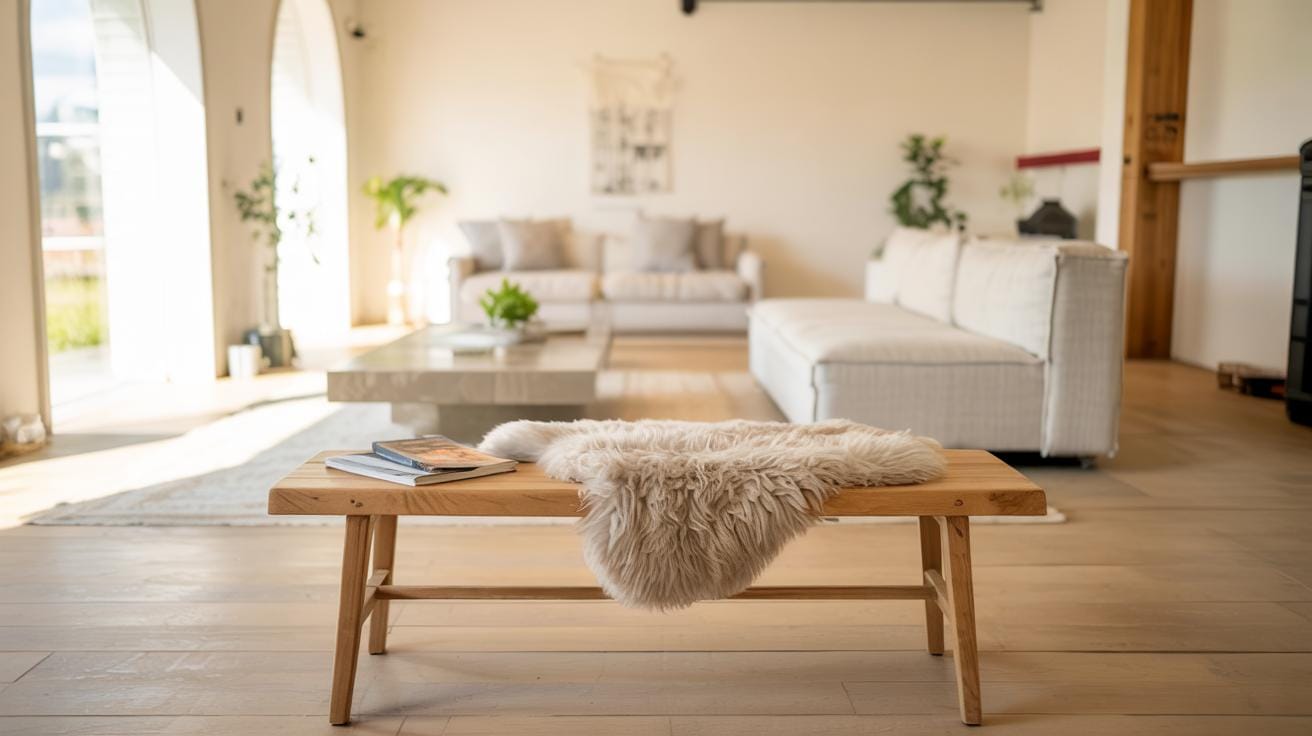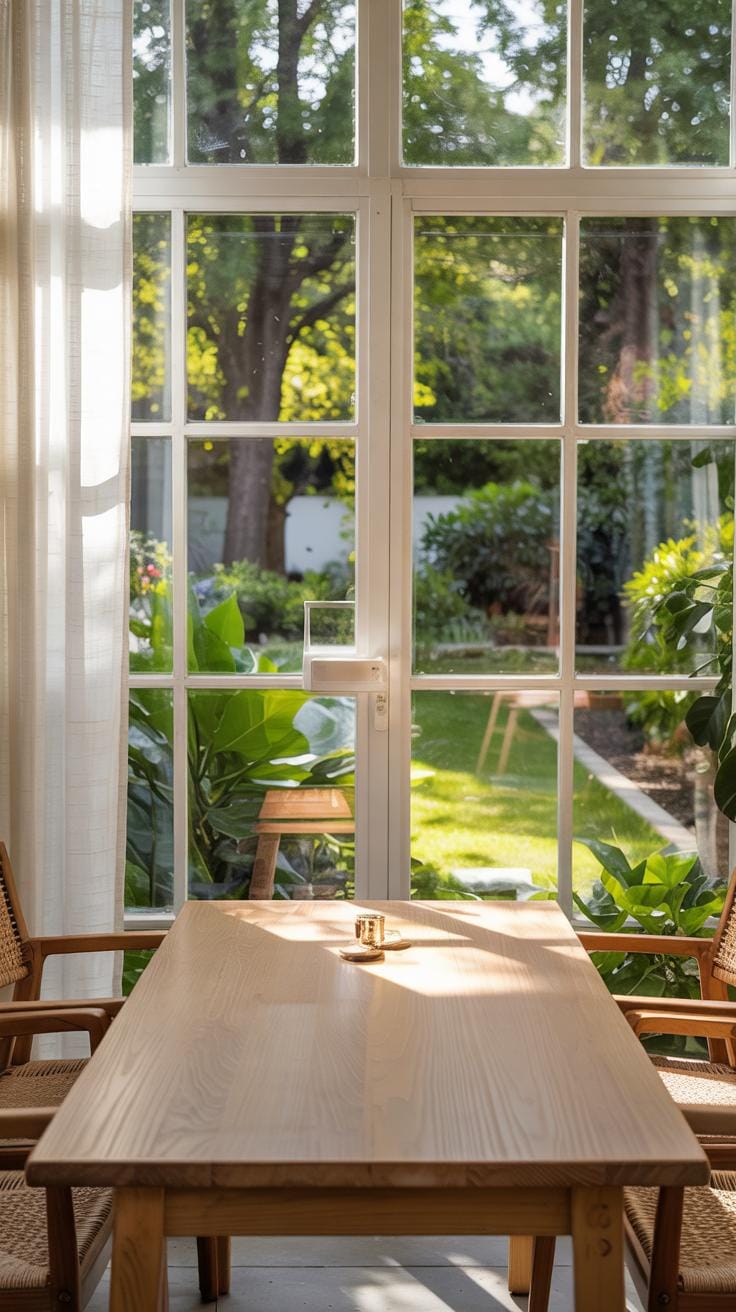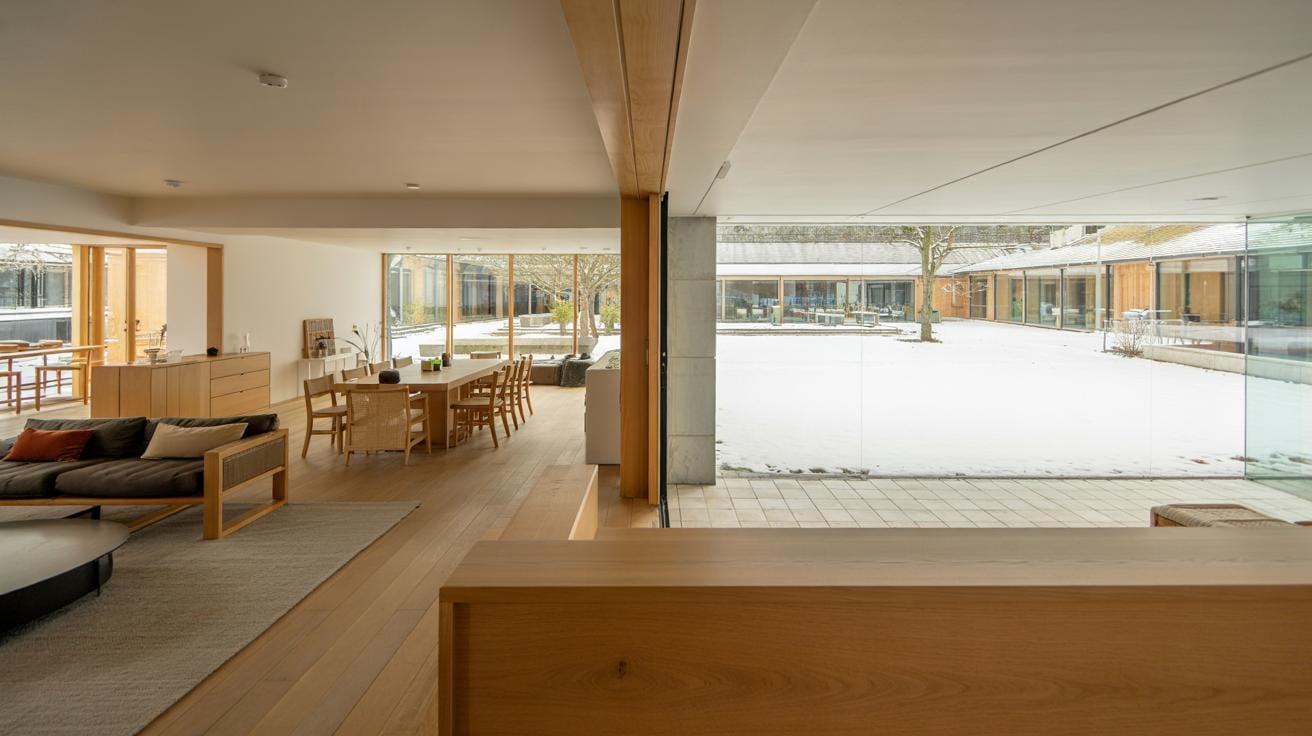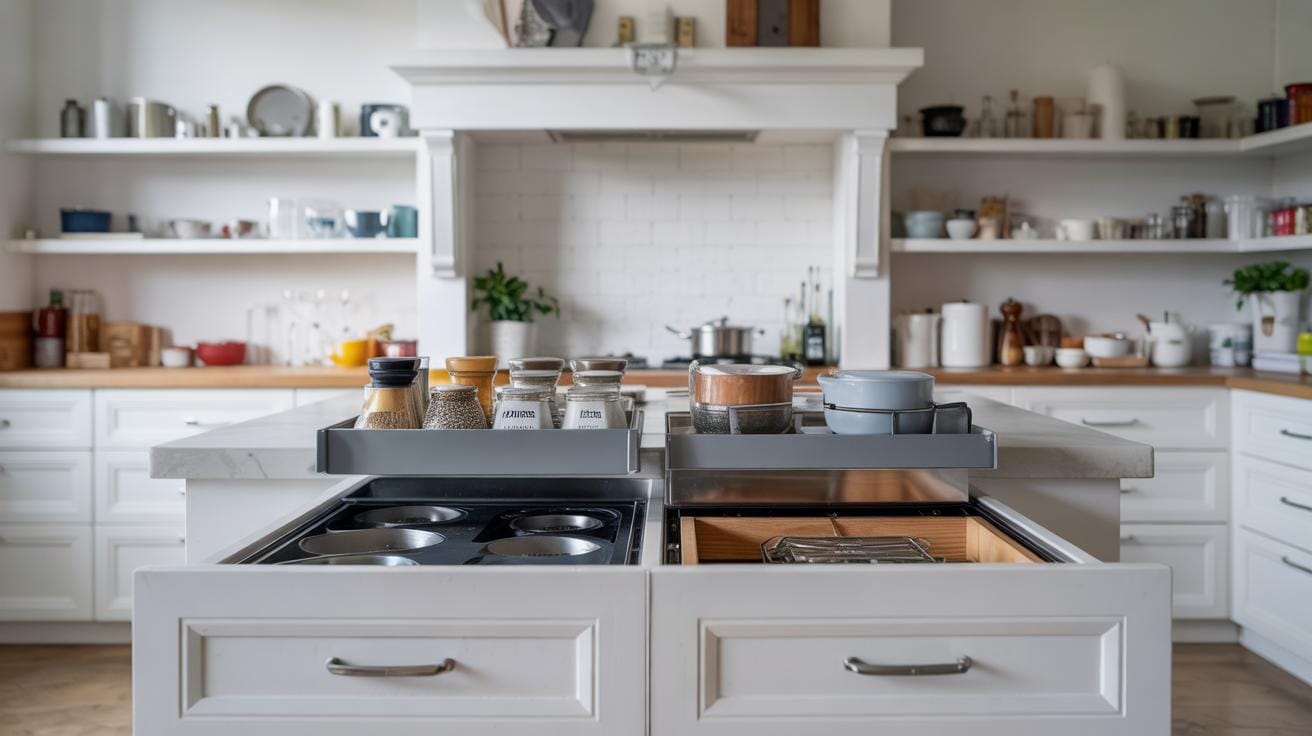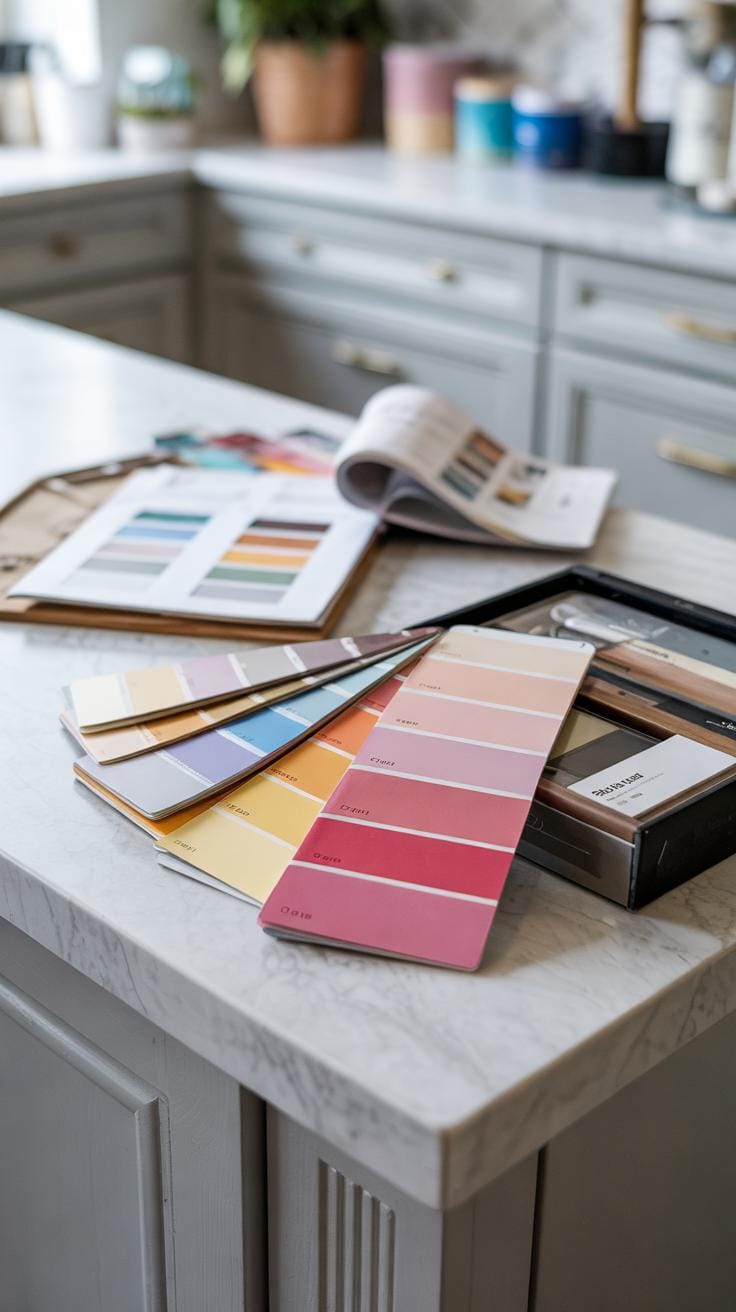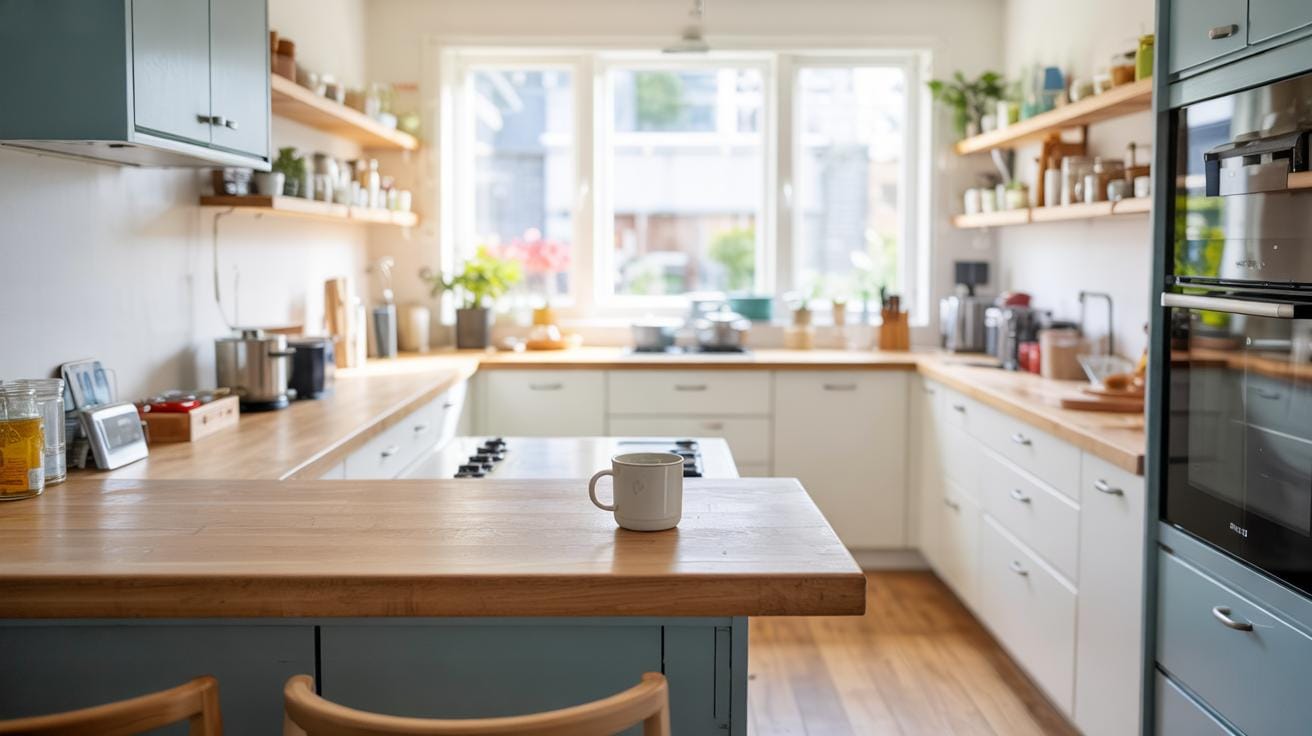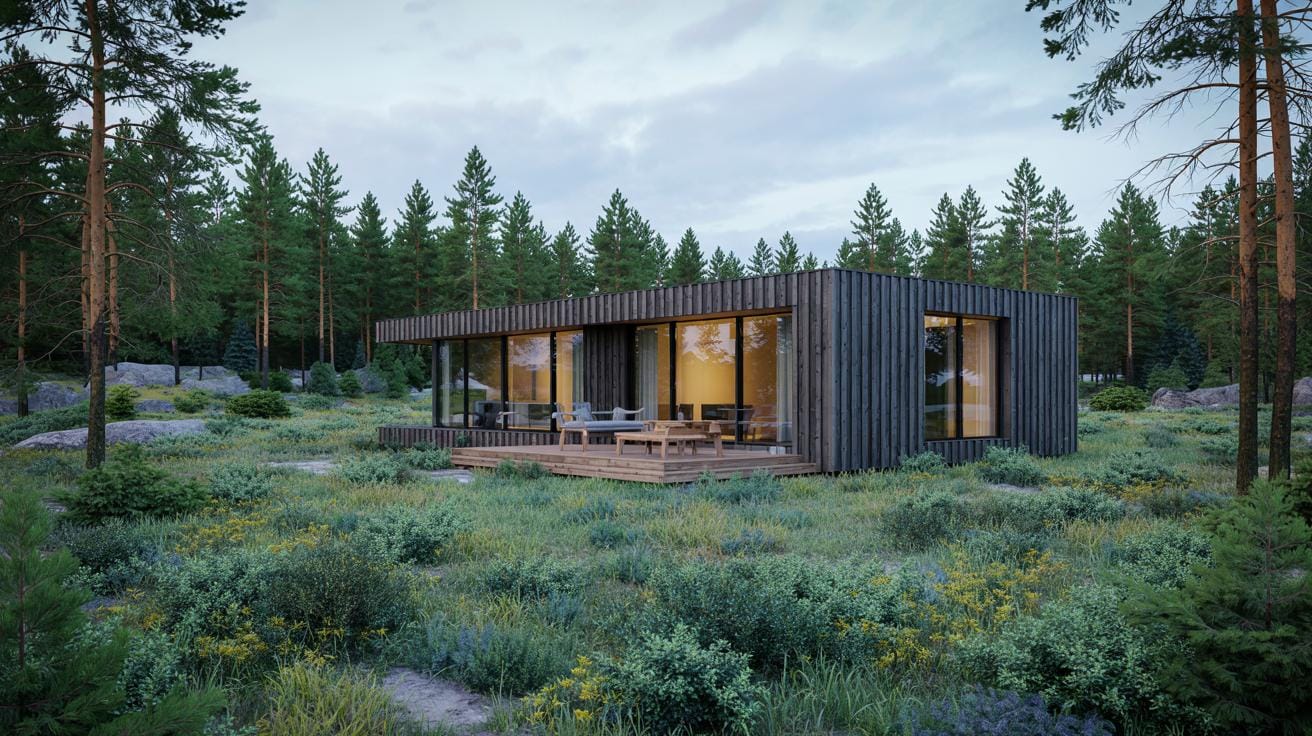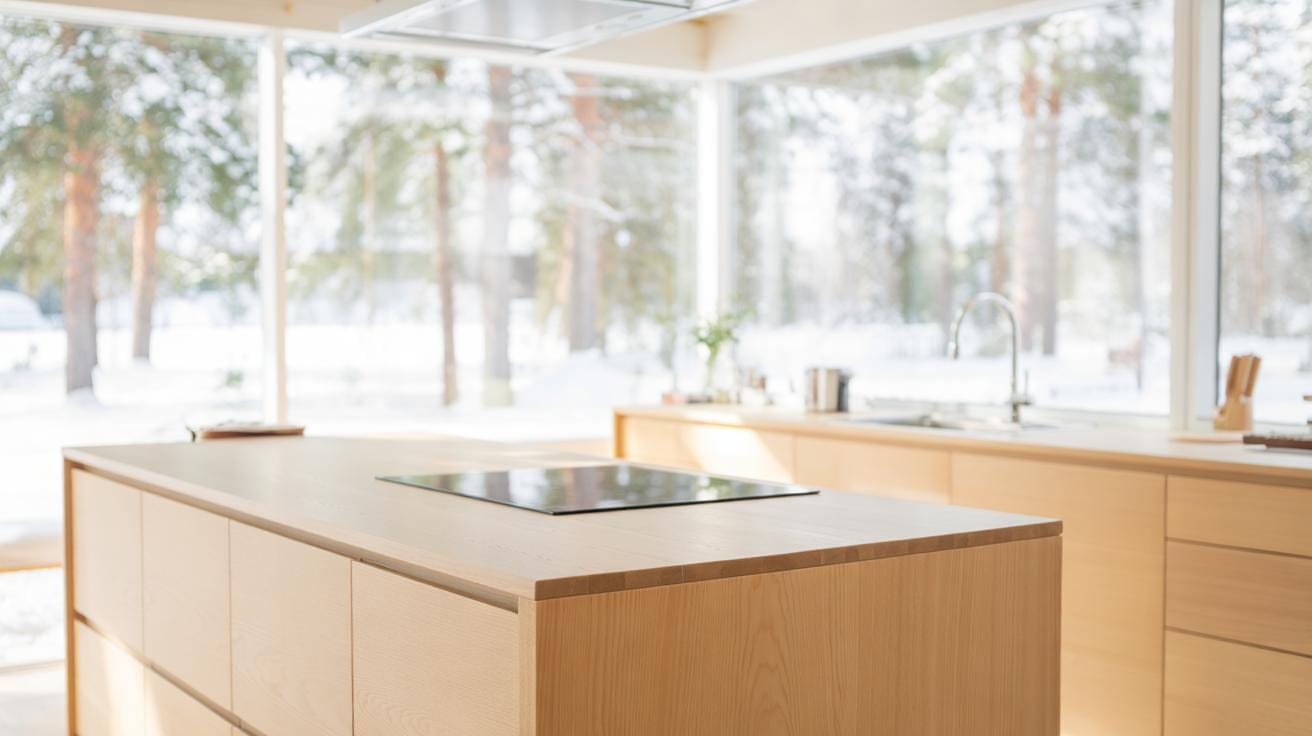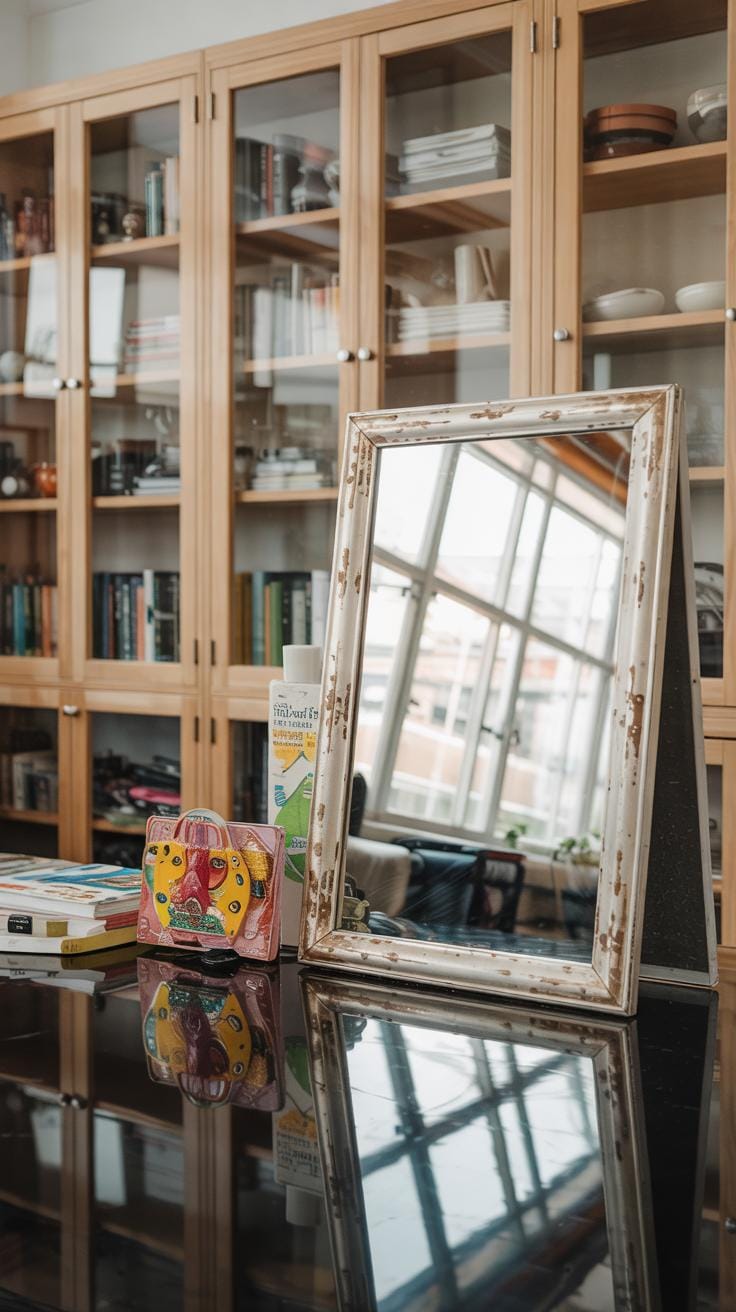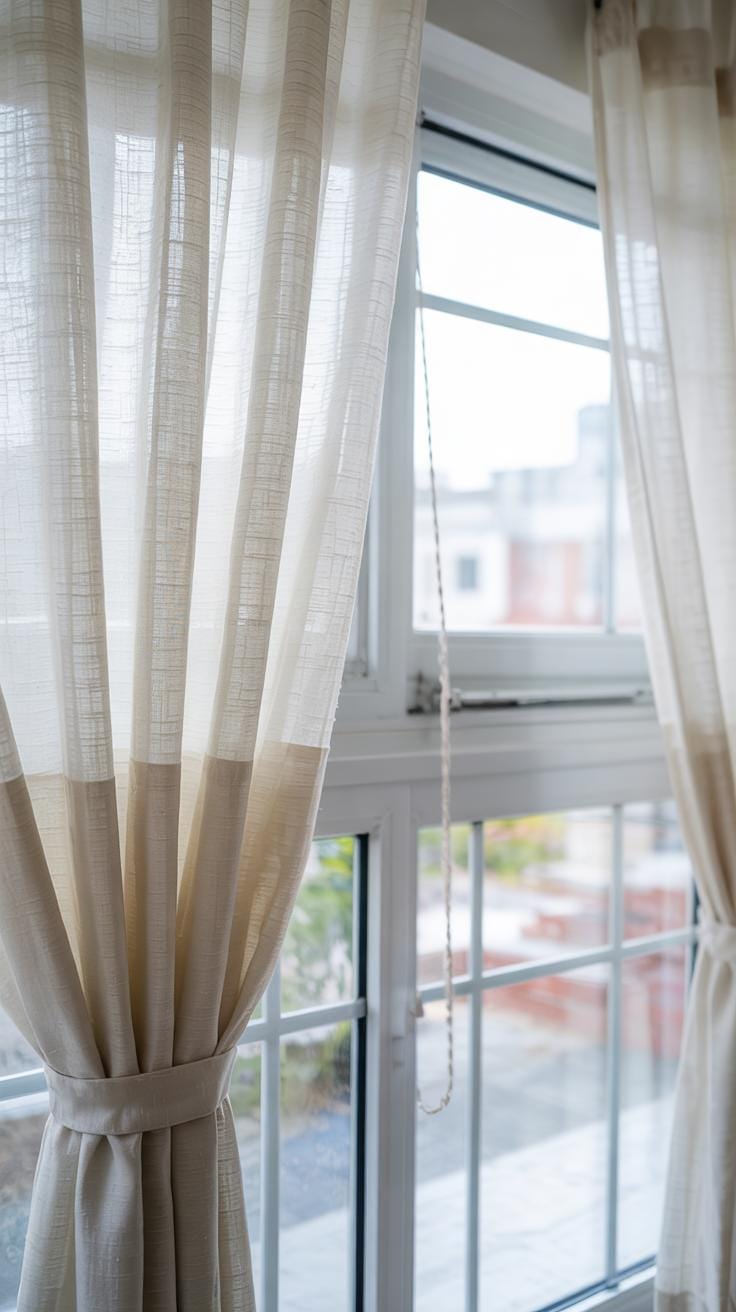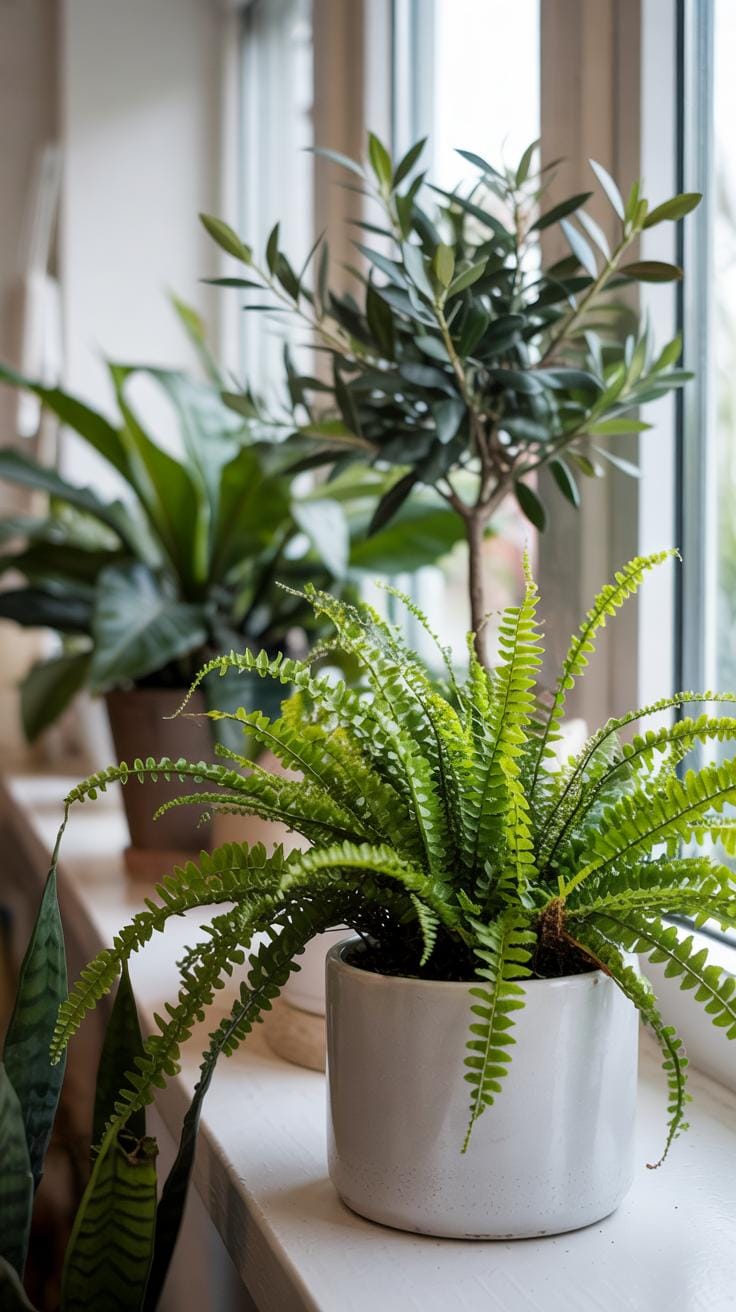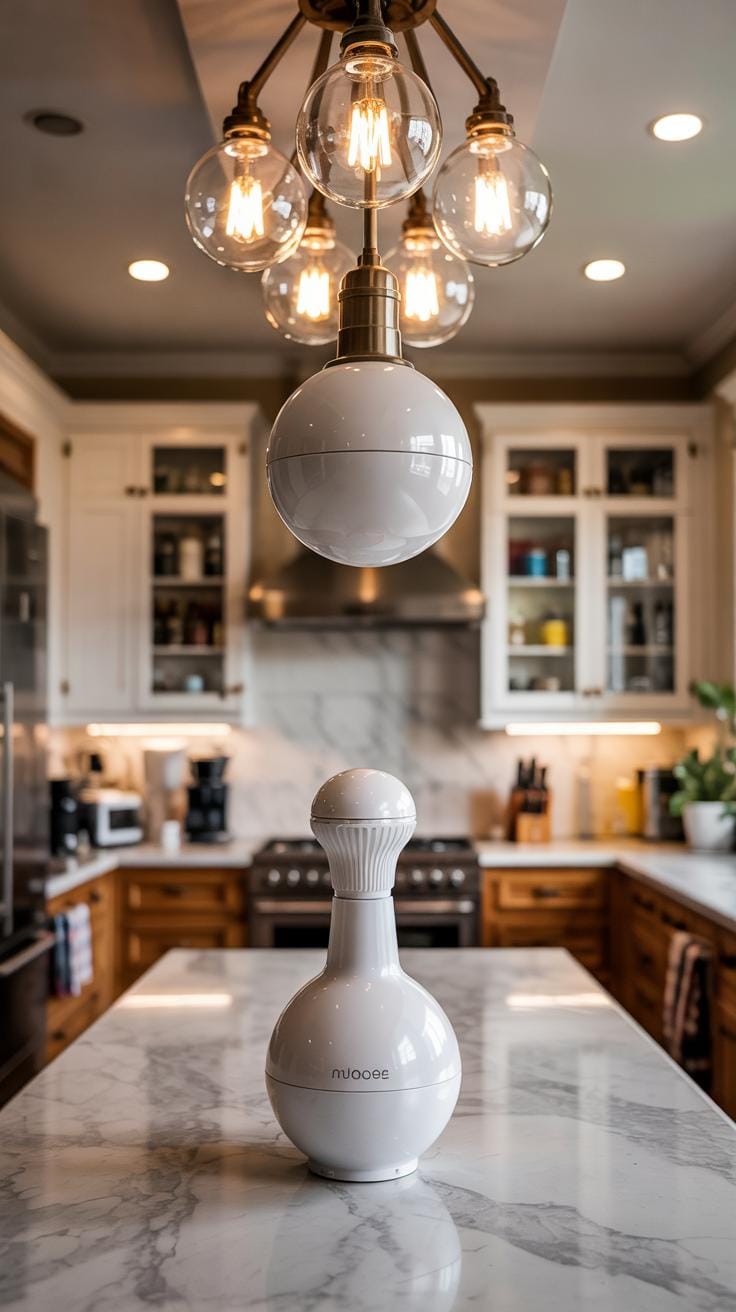Introduction
Light plays a vital role in enhancing the function and feel of your kitchen. In a minimalist Nordic kitchen, where simplicity meets functionality, the way you maximize light can transform your cooking and living space. This design approach emphasizes clean lines, open spaces, and natural materials. It invites you to think about how light interacts with surfaces and colors to create an inviting atmosphere that supports your daily routines. Ever wondered how you could use light to uplift your kitchen’s look without clutter? Understanding the principles behind Nordic minimalism will help you make smarter design choices that align with this philosophy.
Combining minimalism with Nordic aesthetics is not just about keeping your kitchen tidy. It is about letting light work for you to enhance aesthetics and practicality. Whether you cook, eat, or socialize in this space, light affects mood and functionality. You might ask: How can I use natural light more effectively? What are the best fixtures for artificial light? How do colors and materials affect brightness? These questions guide a deeper look at tactics and tips that boost light in your minimalist Nordic kitchen and make the space more enjoyable and efficient.
Understanding Nordic Minimalism In Kitchen Design
You will find that Nordic minimalism centers on simplicity and usefulness. It values clean, open spaces where every item has a purpose. This approach avoids unnecessary decoration. The focus lies in natural materials like wood, stone, and metal to create calm surroundings. These materials also connect you to the outdoors.
Colors tend to be soft and muted, such as whites, grays, and pale blues. These shades calm your mind and make rooms feel bigger. White walls, for example, reflect light and brighten the space. Simple shapes and clean lines keep the kitchen free of clutter, helping you stay organized and efficient.
What would your kitchen look like if every element had a clear role? Nordic minimalism encourages you to choose pieces that serve a function and add quiet beauty. This thoughtful approach fosters a kitchen design focused on living well, not just decorating.
Key Features Of Nordic Minimalist Kitchens
Nordic kitchens show clear lines and open spaces. Cabinets and counters often have flat fronts without handles to maintain simplicity. Shelves stay uncluttered, showing only what you need. This makes the space feel calm and easy to use.
Natural light plays a big role. Large windows and bright paint help maximize daylight. You will notice soft, even light fills the room, making tasks easier. This reduces the need for extra lighting during the day. Flooring and countertops are often light-colored wood or stone, which reflect light further.
Imagine walking into a kitchen with no distractions, just smooth surfaces and clear sightlines. This design helps you focus on cooking and spending time with family without feeling overwhelmed by clutter.
Why Minimalism Matters In Nordic Kitchens
Minimalism helps your kitchen work better. By removing excess objects, you improve movement and gain more counter space. You face fewer distractions when cooking or cleaning. This practical setup supports daily tasks and saves time.
Light also benefits from minimalism. When surfaces stay clear and colors remain light, daylight bounces through the room more freely. That makes your kitchen feel larger and friendlier, even on short winter days.
Think about your own kitchen. Could simplifying and organizing help your space feel brighter and easier to use? A minimalist Nordic kitchen aims to improve both function and mood by focusing only on what you truly need.
The Role Of Natural Light In A Nordic Kitchen
You live in a region where daylight hours shrink during winter. This means your kitchen often feels dark and cramped. Natural light becomes more than a design choice—it supports your well-being and energy. It makes the kitchen inviting and usable even on the shortest days.
Nordic kitchens rely on natural light to maintain a sense of openness. Without enough daylight, spaces can feel cold and disconnected. The limited sun hours force a strategic approach to capturing every ray available.
How do you bring in as much daylight as possible when the sun barely rises? Can your kitchen layout adapt to the changing light through the year? These questions shape the way you design and use your kitchen to maximize comfort and function.
Maximizing Daylight Through Window Placement
Window size matters because larger windows let in more light. Positioning windows on south-facing walls grabs the most daylight during winter months. Even vertical or corner windows can pull light deeper into your kitchen.
Think about your window frames and how they impact light flow. Slim frames create less shadow inside. You can avoid high windows with heavy mullions that block sun rays. When you plan your windows, consider how the sun moves across your kitchen throughout the day.
Do you have the chance to add skylights? These can flood your kitchen with light from above. If space allows, floor-to-ceiling windows bring in both light and a connection to the outdoors.
Using Reflective Surfaces To Boost Natural Light
Light colors on walls and surfaces help bounce natural light around your kitchen. White walls are common in Nordic kitchens because they reflect daylight instead of absorbing it. This simple choice brightens the room without extra bulbs.
Glass elements—like cabinet doors or open shelving—allow light to pass through rather than block it. Mirrors work well too. Adding a reflective backsplash, such as white tiles or even subtle metallics, spreads daylight farther.
You can ask yourself: How can my surfaces help daylight reach every corner? Choosing finishes with a gentle sheen lets your kitchen feel lighter and cleaner while simplifying the space.
Choosing Colors To Enhance Light In Your Kitchen
Color plays a key role in how light behaves in your kitchen. Choosing the right colors can boost brightness and influence the mood. In minimalist Nordic kitchens, colors that reflect light well keep the space feeling open and calm. Dark or heavy colors tend to absorb light, making the kitchen feel smaller and less airy. When you pick colors with higher reflectance, your kitchen takes full advantage of both natural and artificial light sources.
Think about how different tones interact with light throughout the day. Bright, neutral shades can create a clean, fresh environment that feels inviting and organized. How do the colors in your kitchen impact how you work or relax there? Selecting hues that encourage positivity and clarity contributes to a more efficient and enjoyable space.
Choosing paint, cabinetry, and countertop colors with light reflection in mind gives you control over the kitchen’s brightness without needing extra lighting. This strategy supports the minimalist Nordic goal of simplicity paired with smart design.
Neutral And Light Color Palettes
White, gray, and light wood tones form the backbone of many Nordic kitchens. These colors strengthen light reflection and support a minimalist style. White walls and cabinets bounce light around the room, making even small kitchens appear larger. Gray offers a soft contrast without risking dullness or heavy shadows. Light wood brings warmth while keeping the atmosphere bright.
Using these colors helps maintain a consistent brightness throughout the day regardless of changing natural light. For example, pale oak flooring catches sunlight and spreads it evenly. You create a balanced mood that feels clean and welcoming by sticking to these tones.
Neutral palettes also simplify decorating choices. When you add or change accents, the core space stays calm and functional. Is your kitchen color arrangement helping you stay focused or does it distract? Thoughtful selection here supports everyday use and aesthetic appeal.
Accent Colors That Complement Light
Accent colors introduce personality without compromising brightness. Soft pastels like dusty blue, sage green, or muted peach work well in Nordic kitchens. These shades add subtle interest while reflecting enough light to keep the space open.
Instead of dominating the room, accent hues appear in small areas such as backsplashes, dishware, or textiles. This approach adds depth without shutting down light flow or contradicting minimalism. You might try a pale mint backsplash behind white cabinets or gentle lavender utensils on a light countertop.
When selecting accent tones, ask yourself if they support the feeling you want in your kitchen and if they enhance or reduce brightness. Using modest accents tuned to your neutral base offers both style and function without complexity or clutter.
Optimizing Artificial Lighting For Function And Style
You need different light types to make your Nordic kitchen work well and look good. Ambient lighting sets the general brightness. It fills the room evenly without harsh spots. Task lighting focuses on key areas like the countertop or stove, helping you see clearly when you prepare food. Accent lighting highlights features like open shelves or artwork, adding depth and interest without cluttering the space.
In Nordic design, simplicity meets purpose. Each light source should feel intentional and clean. For example, a soft glow from a pendant lamp above the kitchen island helps create a cozy workspace. Meanwhile, under-cabinet lights offer direct illumination exactly where you need it. Combining these layers lets you adjust the mood and function depending on the moment.
How do you balance style and practicality in your kitchen lighting? Think about where you spend most of your time and tailor your fixtures for those spots. Proper layering doesn’t just brighten your kitchen; it improves your experience and supports the minimalist Nordic goal of less fuss, more clarity.
Selecting Efficient And Stylish Fixtures
Choosing the right fixtures shapes both the light quality and the look of your kitchen. Recessed lights offer a clean, streamlined ceiling without bulky fittings. They distribute light uniformly while staying out of sight. Pendant lamps bring character and focus. Opt for simple shapes and natural materials like wood or matte metal to fit Nordic taste.
Under-cabinet lighting is a smart addition. It brightens work surfaces without shadows. LED strips or puck lights use little energy and last long. They keep your counters well lit without adding clutter, which is key in a minimalist space.
Think about spots where light fades or feels uneven. Small fixtures placed strategically can balance the overall design. Would a series of modest pendants over your island deliver enough task light and style? Can you install slim LED strips to create brightness without distracting from clean lines?
Creating Layers Of Light
Combining ambient, task, and accent lighting creates a well-rounded, usable environment. Ambient light sets the base level. You might have ceiling-mounted LEDs or slim recessed lights that offer gentle, steady brightness. Task lights hone in on prep areas. Under-cabinet lights reduce shadows and improve visibility for cutting or mixing. They also prevent eye strain during detailed cooking.
Accent lights give your eye a place to rest and add visual interest. Placing them above open shelves or inside glass-front cabinets highlights textures and shapes. This creates contrast and a balanced atmosphere.
Consider which tasks you do most and where shadows fall. Would you get more comfort and safety with a bright, focused light near the stove or sink? Layered lighting means you can switch between different settings depending on your needs. What lighting setup helps you feel calm and collected while working in your kitchen?
Furniture And Fixtures To Keep The Space Open And Light
When choosing furniture and fixtures for a minimalist Nordic kitchen, focus on pieces that do not block or absorb light. Select tables and chairs with slim legs or open frames to avoid visual clutter. Transparent or light-colored materials allow light to pass through, making the room feel airy and spacious.
Fixtures with clean lines and simple shapes help maintain a sense of openness. Consider slim pendant lights instead of bulky chandeliers to keep the ceiling area free. For faucets and handles, minimalist designs in polished chrome or brushed nickel reflect light, adding brightness without overwhelming the space.
Could your kitchen benefit from multi-functional furniture, like stools that tuck neatly under counters? Such choices preserve floor space and support easy movement. Think about spacing too; avoid overfilling with furniture so light can flow freely. A thoughtfully selected layout lets natural and artificial light bounce effectively, creating a bright, welcoming kitchen.
Minimalist Cabinets And Counters
Flat cabinet fronts without raised panels or heavy molding help surfaces reflect more light. Choose light finishes such as white, pale gray, or soft wood tones to keep the kitchen from feeling dark or cramped. Glossy or semi-gloss surfaces can bounce light from windows or fixtures, enhancing brightness.
Counters made from materials like quartz or light-colored laminates maintain a clean, open look. Integrate space-saving designs like handleless doors or push-to-open mechanisms to reduce visual interruptions. Think about the scale of cabinets; avoid oversized units that swallow space. By simplifying shapes and colors, you create a smooth, continuous flow that amplifies light and minimizes distractions.
Smart Storage To Reduce Clutter
Clutter can block light and make a kitchen feel smaller. Use smart storage solutions to hide appliances, utensils, and other items away. Built-in drawers with dividers and pull-out pantries keep essentials organized but out of sight. Wall-mounted shelves with closed fronts prevent items from spilling into the cooking space.
Consider integrating storage inside islands or under counters to keep surfaces clear. Canisters and containers with uniform designs maintain order and reduce visual noise. When every tool has its place, worktops stay free for cooking and food prep, which helps maintain the clean, bright look Nordic kitchens are known for. What items in your kitchen could move behind closed doors to enhance openness?
Using Mirrors And Glass To Multiply Light
Mirrors reflect the light that enters your kitchen, helping it reach darker corners. By placing mirrors correctly, you can bounce natural or artificial light around the room. This creates a brighter space without adding extra light sources or clutter.
Glass elements work similarly. Cabinets and doors with glass surfaces let light pass through, reducing shadows and making the kitchen feel more open. Glass also adds a clean, simple look that fits well with minimalist Nordic design.
You might wonder where the best places for mirrors are or how glass doors could fit your kitchen. Think about where light enters and spreads. Choosing the right spots for reflective surfaces makes a big difference in light flow and adds a sense of depth and openness without sacrificing simplicity.
Best Places To Install Mirrors
Mirrors placed opposite a window multiply sunlight by reflecting it back into the room. This tactic brightens areas that might otherwise stay dark.
Consider spots near cooking or preparation areas. A mirror there can increase visibility and make the kitchen feel larger. You might also use a mirror above a backsplash or on a wall where light fixtures shine.
Smaller mirrors work well in tight spaces, like behind open shelving or near entry points. These reflections break up space and prevent the kitchen from feeling boxed in. Have you thought about where your kitchen feels shadowed? That’s a good place to start.
Incorporating Glass Cabinets And Doors
Glass cabinet doors allow light to travel through storage spaces, reducing visual bulk. They keep your kitchen airy and prevent closed-off areas from forming.
Choose frosted or textured glass if you want to hide clutter but still keep light flowing. Clear glass works well if you prefer displaying dishes or glassware while enhancing brightness.
Glass doors on pantry units or cupboards let light pass and maintain open sightlines. This fits perfectly with the minimalist Nordic style, which values openness and simplicity. How could your kitchen benefit from more transparent surfaces? Experiment with glass fronts to find what keeps your space bright and uncluttered.
Window Treatments That Allow Maximum Light
The Nordic kitchen thrives on natural light to create a sense of openness and calm. Choosing window coverings that reduce glare without blocking sunlight is essential. Sheer curtains or light-filtering blinds offer control over brightness while preserving daylight. These options maintain privacy and comfort without darkening your kitchen.
Consider lightweight fabrics like linen or cotton in soft colors. They let sunlight pass through gently and prevent harsh shadows. Blinds with adjustable slats can be angled to direct light where you need it, reducing glare on surfaces or screens. This flexibility helps maintain a bright atmosphere throughout the day.
How often have you noticed a heavy curtain dulling your kitchen’s natural glow? You can enhance your space simply by swapping thick fabrics for sheer alternatives. Let your windows bring in as much daylight as possible while you keep the glare in check.
Sheer Curtains And Blinds
Sheer curtains made from thin, breathable fabrics add a soft layer that filters sunlight. Choose white or pale tones to complement a minimalist Nordic palette. These curtains diffuse harsh light while allowing your kitchen to feel open and airy.
Blinds made from lightweight materials like bamboo or white-painted wood can brighten a room quickly. You can adjust the slat angle to control light, offering privacy without shutting out daylight.
Adjustable coverings give you control during different times of the day. Morning sun might require more filtering than afternoon light. By choosing options that adapt, you keep your kitchen bright and welcoming at all hours.
Keeping Windows Clear And Unobstructed
Clear and open windows maximize daylight and connect your kitchen to the outdoors. Avoid cluttering windowsills with decorations or heavy plants that block light. Maintaining clean windows improves clarity and allows more sunlight to enter.
Regular cleaning removes dust, grime, and streaks that reduce brightness. Wiping down both sides of the window glass at least once a month keeps your kitchen luminous. Minimal window coverings also simplify upkeep and enhance openness.
Ask yourself if your window treatments and decorations create barriers to light. Keep them minimal and functional to uphold the bright, simple feel of a Nordic kitchen. Your kitchen windows should frame the outside in a way that adds light, not weight.
Bringing Nature Inside To Brighten The Space
In a minimalist Nordic kitchen, natural elements create a sense of calm and openness. Plants add fresh air and subtle green tones that enhance the feeling of brightness without cluttering the space. Choosing the right natural touches can lift the atmosphere and balance simplicity with warmth.
Natural light interacts with plants and materials in the kitchen, helping to soften shadows and reflect a gentle glow. These elements connect your indoor environment with the outdoors, which is key in Nordic design where daylight is limited during winters. Think of a small potted herb or a smooth stone centerpiece. Each brings texture and life, inviting you to slow down and enjoy the quiet beauty in your kitchen.
Are you using natural touches that invite light or overshadow your space? Pick elements that support your goal of brightening without adding noise.
Selecting Indoor Plants That Thrive In Light
Many Nordic homes have less intense natural light, so choose plants that can grow well in low to moderate light. Snake plants, with their upright leaves, flourish without direct sun. ZZ plants tolerate dim corners and need minimal care. Pothos and philodendrons spread gently and brighten shelves or windowsills.
Spider plants bring a light, airy feel and adapt well to indirect light. Cast iron plants handle shady spots and help fill empty spaces. Succulents require more sun but can thrive near a bright window if you can offer consistent lighting.
How do you care for your indoor plants? Focusing on plants suited to your kitchen’s light conditions ensures they will stay healthy and boost brightness without extra effort.
Natural Wood And Stone Materials
Adding natural wood and stone to your kitchen introduces texture that warms the cool minimalist palette. Light wood tones reflect light subtly, making the space feel larger and softer. Oak, birch, or pine surfaces work well for countertops, cabinetry, or furniture.
Stone, like marble or granite with light veining, catches daylight and adds a gentle shimmer. These materials also help create quiet contrast against white or pale walls, avoiding a flat look. Their natural irregularities make the kitchen more inviting without overwhelming the simplicity.
Have you noticed how wood grain can guide your eye and create flow in the kitchen? Choosing natural finishes over synthetic ones keeps the focus on light and surface quality, supporting your minimalist vision.
Decluttering Strategies For Light And Space
The Nordic kitchen thrives on simplicity and brightness. To keep your space feeling open and light-filled, focus on removing items you rarely use. Ask yourself: Do I really need this gadget or utensil on display every day? Removing excess objects allows natural and artificial light to spread freely.
Organize daily essentials in designated spots. Use clear containers or uniform jars to store dry goods, making the kitchen look tidy and cohesive. Avoid overcrowding countertops; leave ample room for meal prep.
Clear surfaces reflect light better and reduce visual noise. Think about rotating less-used items out of sight instead of stacking or crowding them. When you reduce clutter, every light source works more effectively, brightening the whole kitchen.
Daily Habits To Maintain Minimalism
Set a daily routine to wipe down counters and put away dishes right after use. This small habit helps prevent clutter build-up and keeps your kitchen looking fresh. When things have a specific place, you save time looking for items and avoid messes.
Invest in smart storage solutions like pull-out drawers, dividers, and hooks to keep everything orderly. Regularly review what you use and get rid of duplicates or broken items. Clearing out once a season will keep your minimalist kitchen from becoming overcrowded.
Design Choices That Prevent Clutter Build-Up
Built-in storage maximizes your kitchen’s clean appearance by hiding items behind sleek fronts. Cabinets without handles create smooth surfaces that let light bounce around freely. Use deep drawers for bulky pots and pans to keep counters clear.
Open shelving can work if used intentionally. Display only essential or beautiful items neatly and avoid overcrowding. Choose shelves that match your kitchen’s color palette to keep them subtle and part of the design, not a distraction.
Have you considered how your storage design affects light flow and ease of cleaning? A well-planned kitchen reduces clutter and helps maintain the bright, airy Nordic feel you want.
Adapting Your Kitchen Lighting To Different Times And Tasks
Your kitchen needs change throughout the day. Morning light can be soft and natural, while evening requires brighter illumination for safe cooking. Adjusting your lighting based on the time improves both comfort and function. Think about when you prepare meals, clean, or simply enjoy a cup of coffee. Does your current setup support these moments?
Using different lighting settings helps you adapt easily. Consider brighter light for chopping vegetables or reading recipes. Dimmer light suits early breakfast or late-night snacks when you want a relaxed mood. Changing the light intensity can also protect your eyes during long cooking sessions.
Try setting layered lighting that switches depending on your tasks. Overhead lights provide general brightness, while under-cabinet and island lights focus where you need it most. Can your fixtures be adjusted without hassle? This foresight avoids discomfort and maintains your minimalist design.
Dimmer Switches And Smart Lighting Controls
Dimmer switches let you control the brightness quickly. You can set a soft glow for mornings and increase it to full light when cooking dinner. This flexibility saves energy too. Why light the whole kitchen when only a small area needs attention?
Smart lighting adds another level of control. You can schedule lights to turn on and off based on your routine. Voice commands or smartphone apps make adjusting easy. Imagine prepping a meal with just a word to brighten your workspace.
Choose dimmers and smart systems designed for clean lines and simple setups. Avoid bulky switches that clutter your minimalist Nordic kitchen. These tools improve efficiency without disrupting your space’s calm and airy feel.
Using Task Lighting Effectively When Cooking Or Working
Focused light helps you see details clearly when cutting, mixing, or measuring. Under-cabinet fixtures and pendant lights over the island create strong illumination where you need it most. This prevents shadows and reduces mistakes.
Position task lights directly above work areas. Adjustable fixtures allow you to point light exactly where your hands move. This focus saves time and keeps you safe with sharp knives and hot surfaces nearby.
Task lighting doesn’t have to be harsh. Choose bulbs that emit natural white light to match daylight and keep your space feeling open. How well-lit are your food prep zones? Upgrading these spots enhances both safety and your cooking experience.
Conclusions
Bringing more light into your minimalist Nordic kitchen does more than improve visibility. It elevates the whole experience of using the space. By focusing on clean design, neutral colors, reflective surfaces, and strategic lighting choices, you create a kitchen that feels larger, warmer, and more welcoming. You have the power to set the mood and support your daily activities through thoughtful light management. What steps will you take to harness light better in your kitchen?
Your minimalist Nordic kitchen is a canvas for simplicity and brightness. Explore solutions like window treatments that let in maximum sunlight, layering different light sources, and selecting materials that amplify light. Each choice contributes to a balanced, light-filled environment that serves your needs without excess. Remember, your kitchen design is an ongoing process, adapting as your lifestyle and preferences evolve. How will you continue to optimize light to keep your kitchen fresh and functional?

